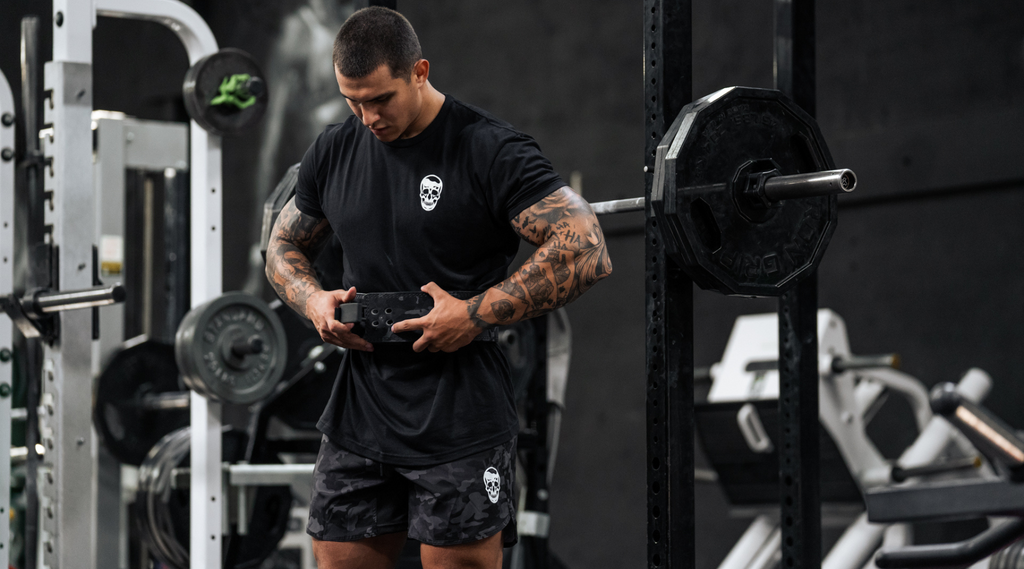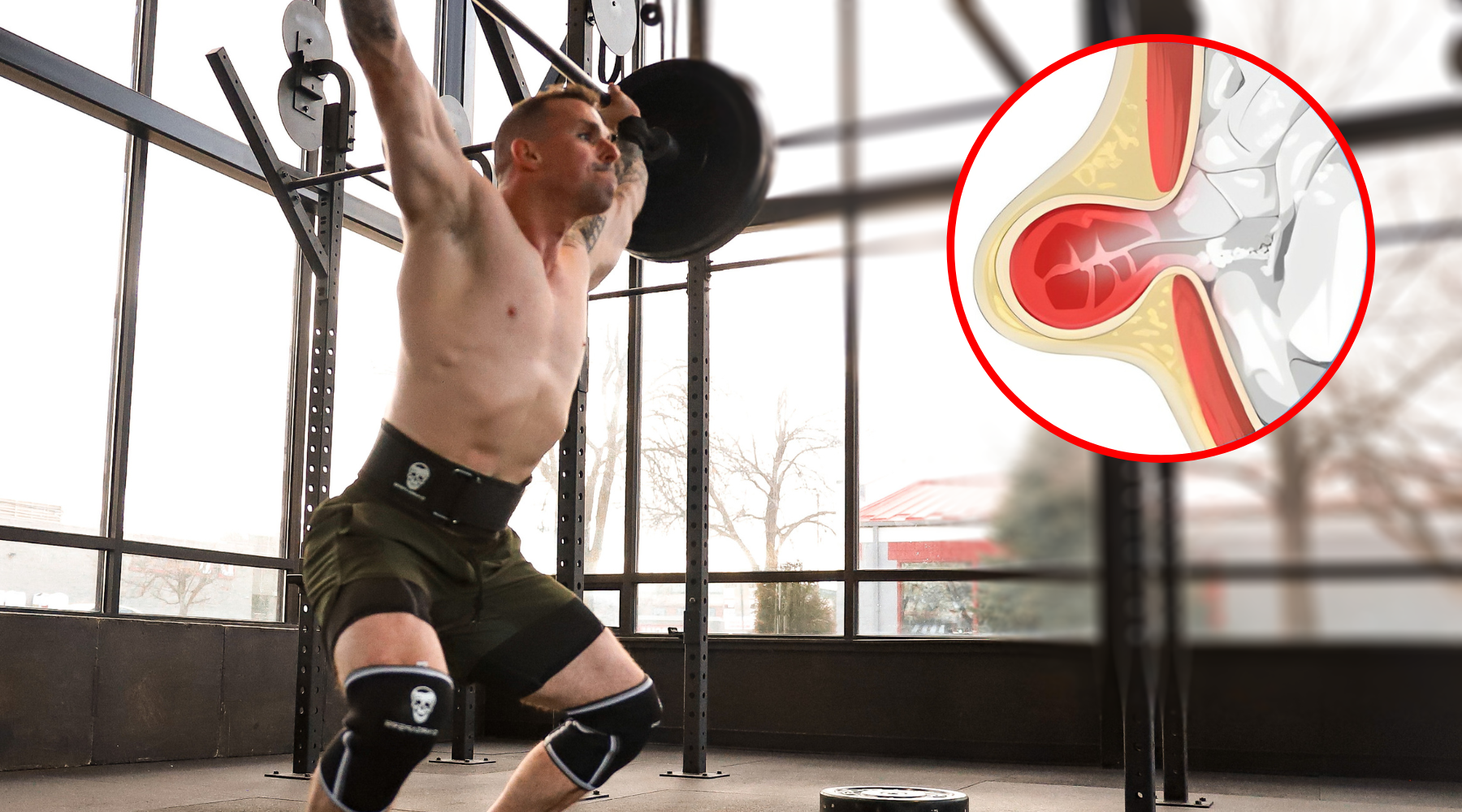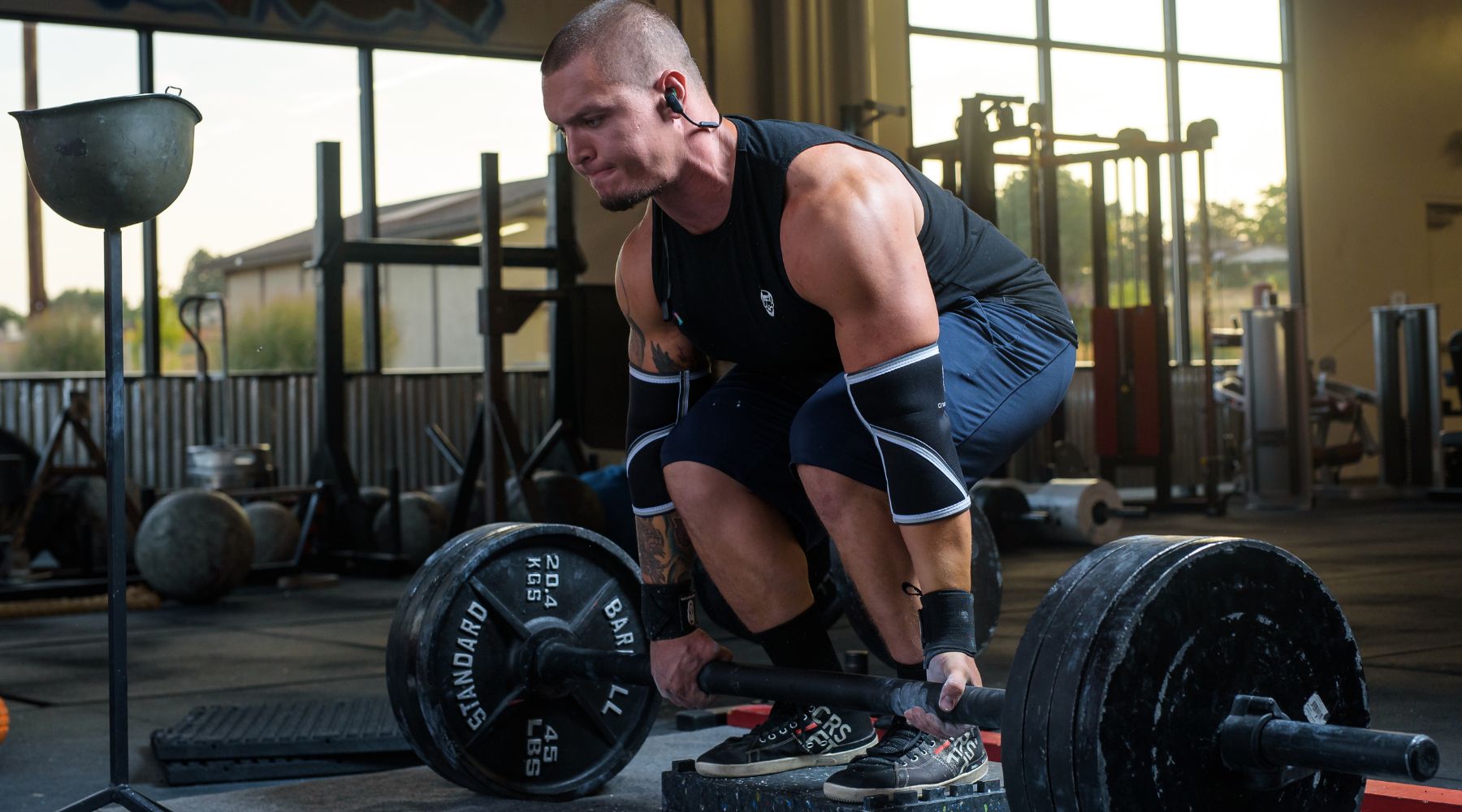When I started using a lifting belt, I would always get pinching and bruises on my stomach, especially when squatting.
I later found out that this is actually a common problem that many new lifters face.
So, why do you get bruises from lifting belts? The most common reasons for getting bruises when wearing a lifting belt is that the belt is too tight, or the belt is still new and is not broken in properly. This is especially the case for leather lifting belts that have a thickness of 10mm or more.
Fortunately, there are some simple solutions that you can implement in order to limit the amount of bruising you get, or avoid them altogether. I’ll share these tips below.
Key Takeaways:
- Your belt is not a corset, so don’t cinch it tight like one. You should be able to fit a finger or two between your abs and your belt when it is done up.
- Newer belts will pinch and bruise much more than broken in ones. You can take steps to break in your belt faster so it is more comfortable when training.
- Belts come in different shapes and sizes. If your belt is constantly pinching you and bruising your skin, you may have the wrong size for your body.
Why Does Your Lifting Belt Give You Bruises?

1. Your Belt is Too Tight
The most common mistake that I see new lifters make, which can cause a lot of bruising and discomfort, is that they cinch their belt much too tightly and wear it like a girdle.
It is a common misconception that tighter is always better for your lifting belt. Fortunately, this is just not true.
Tightening your belt can have many downsides.
The most obvious of which is that it will pinch and bruise your skin; however, it can also hurt you in other ways. Mainly, wearing your belt too tight may limit your oxygen, hurt your ability to get a full brace, and may limit your squat depth.
How to Fix
The exact tightness of your lifting belt may vary from person to person (or even differ between the squat and the deadlift), but a general rule of thumb is that when your belt is done up, you should be able to fit a couple of fingers between the material and your abdomen.
The belt should not be so loose that it slides around or changes position, but you should be able to comfortably draw a full breath so that your abs have room to expand and push back against the belt during your heavy lifts.
2. Your Belt is New and Not Broken In Yet
You may have just bought a brand new leather powerlifting belt, and now you have realized that breaking in a lifting belt is not an overnight process.
The leather of new belts is often very rigid and stiff, as it has not yet molded to your body.
This can cause a lot of discomfort in the first few months when using your belt, which can manifest itself in the form of pinching and bruising.
You should always be aware of this before you buy your belt and should do your research as to what you can expect when you purchase it.
All belts are not created equal.
Some will require months to break in, while others may be nicely worn in after the first squat session.
How to Fix
The most common fix for this issue is to just continue to use your belt over time.
General wear and tear will break the belt in, and you will find that time will force it to soften up and adapt to your body.
This is especially true for less rigid belts made of cheaper leather, or nylon velcro belts. These will typically require a very short break-in period that can be accomplished in a few gym sessions.
However, if your personal preference means you want to break in your belt to a higher degree or at a faster rate, here are some strategies.
- Roll it tightly. Treat your belt like a new baseball glove, and roll it up as tightly as possible. For more effective results, you can roll it once in both directions and store it for a long period of time in a tight-fitting space
- Use heavy objects. Some find that using heavy objects around their home or gym can aid in adding some extra pressure to the breaking-in process. This would still require rolling or folding the belt as much as you can, and then using the added weight to break the leather in even quicker.
- Apply an oil or jelly substance to the belt. I have personally never witnessed this technique, but some have utilized olive oil or a rubbing alcohol/petroleum jelly mixture to soften their belt up. The theory behind this approach is that the mixture can be applied and rubbed into the belt evenly with a cloth, and this will make it more flexible to work out the leather.

3. Your Belt is in the Wrong Position
Another common error that I see with lifters that are new to lifting belts is that they simply have the belt in the wrong position on their body.
Wearing a belt too high or too low can cause unnecessary pinching when you bend or maneuver your torso in certain positions.
Oftentimes, this will take some experimentation to make sure that whenever you do a movement, your belt is in the most correct and comfortable position.
How to Fix
This is an easy fix, you simply need to experiment.
Generally, the best starting place for your belt should be right under your ribcage, covering your belly button.
Once you have placed your belt here and tightened it properly, perform a bodyweight movement (usually squat or deadlift). If you feel incredibly uncomfortable, or like there is a potential for bruising, feel free to adjust the belt up or down.
Any pain that you feel when performing your bodyweight movement will only be amplified when you add weight to the equation. So, be sure to be patient and get the right positioning before you are in a position to pinch and bruise.
Also, note that some people wear their belts in different places for squats and deadlifts.
This will depend on your body mechanics and leverages, and should not be overlooked if you are feeling bruising in squats but then not experiencing bruising in your deadlifts.
- Related Article: What to Do if You Can't Get a Weightlifting Belt Off
4. Your Belt is too Wide or too Thick for You
Finally, if none of the other reasons for bruising applies to you, there is a chance that your belt is too wide or thick for your body.
Powerlifting belts come in different widths and thicknesses, with the most common being 4 inches wide and 10mm or 13mm thick.
These dimensions typically fit most people, but there is always a chance that they are too big for smaller individuals (especially women with smaller torsos).
If your belt is still causing bruising after it is broken in and tightened and placed properly, there is a chance that maybe it is just the wrong size for you.

How to Fix
Most belts have sizing information on their website regarding the length of their belts. Make sure to take accurate measurements so that you are buying a belt that is proper for you.
A belt that is too long can cause overlapping leather that the belt manufacturer did not intend, which can then get caught up in your skin while lifting and create some bruising.
Further, I would note that the majority of powerlifters do not need a belt wider than 4 inches or thicker than 10mm. Some women may even need to purchase a 3-inch belt or a tapered belt (where the belt tapers to a smaller width around the side and front of the belt).
Belts that are bigger than these are often made for incredibly strong and elite powerlifters or very large humans.
If you do not fit into those categories, the odds are very high that you would be more comfortable with a smaller and more flexible belt.
- Related Article: Does a Lifting Belt Prevent Hernias? (A PT Answers)
Frequently Asked Questions
How Long Do Belt Bruises Last?
Belt bruises typically last no longer than a couple of days. However, sometimes they can stick around longer if you are doing the movement that caused the bruising again before they had time to fade. Don’t worry though, they won’t cause lasting scars.
Can Too Much Compression Cause Bruising?
Yes! One of the most common causes of bruising is when a lifter cinches their belt too tightly. Your belt should be loose enough that, when done up, you can fit a couple of fingers between your abs and the material. You need room to expand your core and brace properly.
Can Lifting Too Heavy Cause Bruising?
It is unlikely that lifting heavy, alone, will cause bruising from your lifting belt if it is the right size, placed properly, and isn’t too tight. However, if you lift too heavy to the point of poor technique, your belt could pinch into the skin and cause some bruising if you are thrown out of position.
Are Bruises Normal When Deadlifting?
Bruises are less common when deadlifting than squatting, mostly because your torso is less folded and bent over, so the belt does not pinch your skin as frequently. However, it is common for your shins or quads to get bruised by the bar if you keep it very tight to you during the lift.













Leave a comment
All comments are moderated before being published.
This site is protected by hCaptcha and the hCaptcha Privacy Policy and Terms of Service apply.